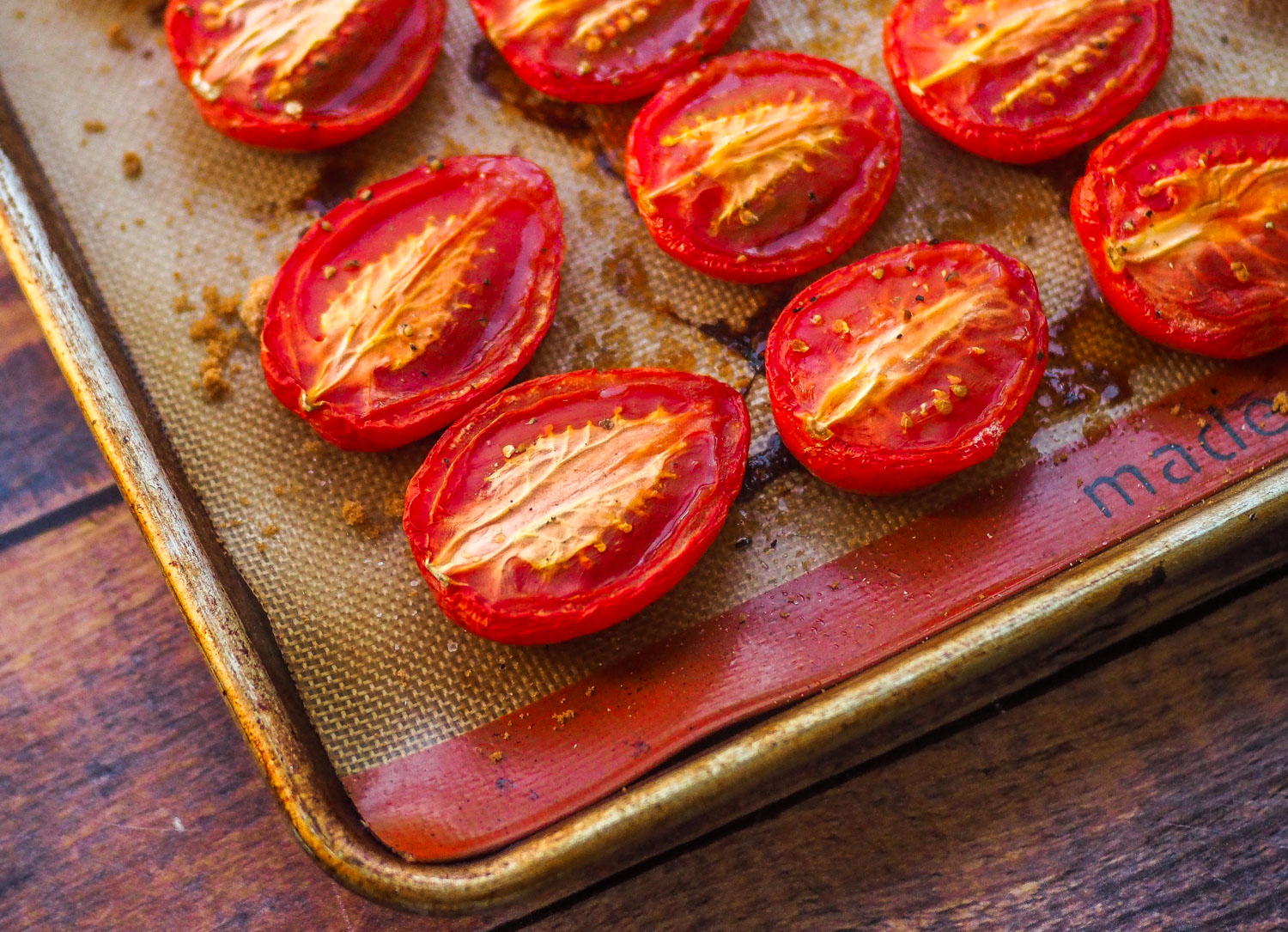#37: Roasted Tomato Soup

I love soup. All soups. Good ones, sorta-shitty ones, I love them all. Making exceptionally good soup at home is super easy and should certainly be a required skill for adulthood (along with learning how to observe basic rules of civility on public transit – I’m looking at you, person who clipped their fingernails on the #99 recently – not cool). The thing with soup is that once you get some basic rules down, you can really go ahead and create a lot of amazing recipes that are all built upon a similar foundation of depth and deliciousness. People think soup is easy – and it is – but not for the reasons they seem to believe (no, you cannot just throw everything in a pot and walk away expecting that you’ll return to something that's more than just the sum of its parts). It’s been awhile since I lectured you with rules, so I think I’ve earned myself a nice long list here:
1. Good stock = better soup.
Most soups capitalize on stock and use a liberal amount of it, so why not use good quality (or hopefully even homemade) stock? Lots of stores have frozen broth in the freezer section (duh) that tends to be better than the stocks and broths biding their time in the soup aisle. The supermarket tetrapack stuff is certainly not going to ruin a soup that was good to begin with, but it just won’t add much more to it is all.
2. Caramelize at every chance.
Roasting or sautéing a vegetable beforehand is a great way to build piles of flavour and depth into your soup. Consider how vegetables change in desirability as they caramelize through cooking: cauliflower is all of a sudden delicious when roasted with olive oil and Brussel’s sprouts never had it so good as the day someone realized we could roast their little leaves until crispy. Caramelization adds so much to your soup – much more so than just tossing all the raw ingredients in a pot and boiling them does. It also leads very nicely into the next rule…
3. Salt at every step.
Roasted vegetables can only be as delicious as they are well-seasoned. Add salt (and pepper, if desired) to taste basically every time you add new ingredients into the equation. When you first sauté onions to build your soup base? Season. When you add the stock and liquids? Season. After you puree and add final ingredients/liquids? Season. If you think you can’t tell the difference between soup that was seasoned throughout the cooking process and soup that was only seasoned right at the very end before serving, you’re wrong. And silly.
4. Smooth should mean smooth
If you’re making a pureed soup (one that is blended, as both of today’s recipes are), make sure you actually get out the lumps by blending for long enough. Many people think soup only needs a quick blitz, but it doesn’t – it needs a good long whiz to really catch all the chunks and rip everything to smithereens. This is especially true if you are using an immersion blender, in which case you probably need to be blending for a full 5 minutes (which is still faster than pureeing hot soup in batches in a blender). Also, food processors and blenders are different. Please use a blender for soup.
Your patience for reading shall now be rewarded (assuming you didn’t scroll down to here immediately, in which case *middle finger*). Below are two recipes that are both just so good. I should know, I ate them all week long and I didn’t get sick of them even once. First we have Bon Appetit’s contender – super roasted, caramelized goodness with amazing depth of flavour, topped with rosemary croutons and a fat pat of butter. Then we have an amalgam of my mum’s recipe and Deb Perelman’s of Smitten Kitchen fame: the whole soup is from scratch – no canned tomatoes, no store-bought stock – and you can tell; it’s super creamy with a current of allspice running through it, making everything feel even more savoury and rich. You literally cannot make a wrong choice here. Unless you make no soup at all, then you may need to take a long hard look at yourself.

